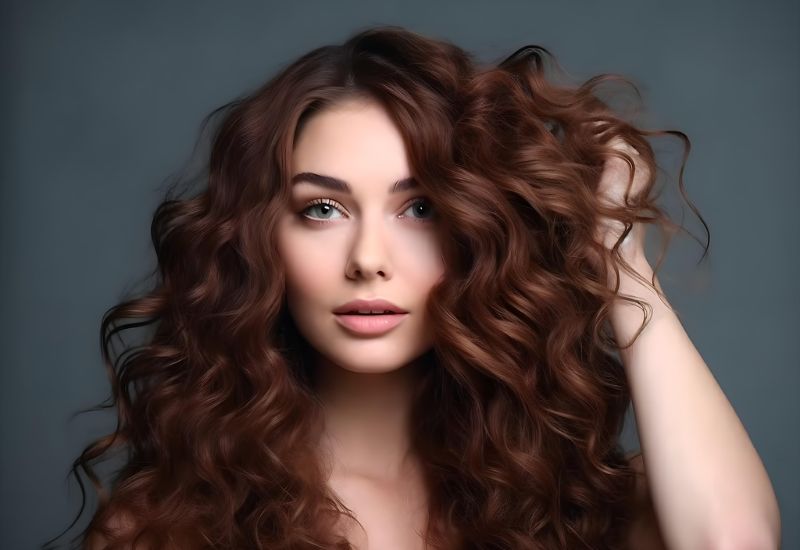
Introduction
The hair care shelves are always a concern; getting to the store to determine which brand you will take home is daunting. The first thing you need to understand is the kind of hair you have because hair is different, and what is required to be done on it is also different.
Whether regular hair or oily, dry, curly, straight, coloured, or treated hair, there is a scheme to select the product abundantly to control hair condition and appearance.
This guide will help you decode those product labels and further pinpoint what is good for you and your hair. So, even with all the information one is thought to have on hair care, the jungle becomes a challenge to tame and an enjoyable task to try.
Also Check – Things to Carry in Your Everyday Makeup Kit
Decoding perfect hair products labels: A Hair Care Dictionary
One must know what their hair products are composed of since only the right products suit the hair type. Here’s a breakdown of commonly found ingredients and what they mean for your hair care routine:
1. Sulfates:
- What They Are:
Sulfates are cleaners found in shampoos to make that fulfilling foam. SLES and SLS are other samples of sulfates in use; however, SLES is generally considered milder.
2. Silicones:
- What They Are:
Silicones are synthetic components incorporated into the formulations of hair care products to afford gleam, slip and manageability.
3. Parabens:
- What They Are:
Thus, Parabens serve as antic microbiolar and mould agents to prevent hair products from being spoiled. These compounds belong to this category, although the most popular are methyl and propylparaben.
4. Natural Ingredients:
What They Are: Natural resources like argan oil, coconut oil, aloe vera, keratin, and shea butter form part of new-generation hair care, which are perfect Hair products.
How They Benefit Hair:
- Coconut Oil: Moisturizes hair more deeply and even makes the hair better than before. This helps get rid of tangles.
- Aloe Vera: Associated with hair care, it relieves the scalp and delivers light moisture to hair.
- Keratin: Improves the hair shaft’s strength, thereby reducing hair breakage.
- Shea Butter: An earthy component used as a penetrative and soother for the hair.
Perfect Hair Care Regime

Here’s a comprehensive breakdown of how to structure your routine based on hair type and concerns:
1. Cleansing
Then, we must remember that the first hair care process is washing the scalp and hair. The shampoo you use should be dependent on the kind of hair you have.
- Dry Hair: Se corners a moisturising or hydrating setting that can give moisture without removing the sebum.
- Oily Hair: A clarifying shampoo is used to wash off excess oils from your hair without leaving the scalp dry.
- Curly Hair: To generalise, all specific hair types have shampoos that help moisturise the curls and eliminate frizz.
2. Conditioning
Moisturising should be aggressively pursued; this is how you should get your hair well-conditioned. When choosing a conditioner, ensure it is tailored to your hair’s needs:
- Dry and Damaged Hair: Get conditioners with great ingredients such as argan oil or shea butter to replenish the moisture for a boost.
- Fine Hair: When it comes to conditioners, choose products that are not heavy for your hair but will give it much-needed hydration and nice volume.
- Application: Wash your hair with shampoo. Remove the tangles from the hair. Do not apply conditioner on your scalp; only length and ends. Your hair dries out most around these areas.
- Leave-in Conditioners: If you have dry or damaged hair, using a leave-in conditioner is perfect for sealing hair in and for heat and environmental purposes.
3. Deep Conditioning
Intensive treatment is essential for nourishing damaged, brittle or hair treated with chemicals. If necessary, try to micro-correct at least once a week, as such procedures involve deep hydration and nourishment and help eliminate damage.
- Tip: A hair mask should contain proteins, vitamins or oils to fit your hair type or state of health. For instance, keratin masks are perfect for making hair more potent, and moisturising masks are ideal for softening hair.
4. Styling
The styling products you will use should relate to the haircut you want or the hair problem you are solving.
- Mousse: Fine hair is recommended because it gives the hair some body and texture and does not pull it down.
- Gel: Great for those with curly hair when you want to add definition or to hold your style throughout the day.
- Hairspray: Usually used to keep your hair in position and create updos or more rigid hairdos.
5. Protection
To preserve hair health and avoid damage, it’s crucial to protect your hair from environmental factors:
- UV Protection: Its hair is weakened and dries up or brittle due to the sun’s rays. If it remains in the sunlight for an extended period, having a UV protection coating or covering it with a hat may also be beneficial.
- Swimming Protection: Chlorine in swimming pools can negatively affect hair. To avoid damage from chlorine on your hair, wash your hair with clear water as soon as you can after swimming. For more frequent swimmers, you also should wear a swim cap.
Common Missteps That Should Not Be Made While Choosing Perfect Hair Products
1. Ignoring Your Hair Type
This is because when you apply products incompatible with your hair, you’ll get poor results. For instance, moisturising is a fine product that makes hair flat and oily. Do your research and find out what hair type you have so you can use the right products.
2. Overusing Styling Products
Too much application of styling products is likely to cause your hair to become heavy and develop a build-up. To combat this problem, always use products sparingly and maintain your hair to remain clean.
3. Not Considering Ingredients
A majority of products in the market have severe chemicals that could have a negative impact on the hair. Look at the ingredients always, and do not buy those products containing sulfates, parabens or alcohol since they can dry up the scalp.
4. This inability is mainly because the model has not been trained to factor in season changes.
Hair requires changes, and that changes with the seasons. During winter, your hair might need more nourishment, while during the other season, your hair needs protection from the sun. Make sure to have frequent trims when your hair grows out, but winter, summer, fall, etc., all require different treatments for your hair.
5. Focused on Product Popularity as the Major Factor of Product Choice
The sign that it should be done is that nowadays people prefer such products or have a high rating. That which may apply to a friend, cousin, sister or wife may not necessarily hold the same fort for you. One should always choose depending on the specific hair needs that they want to be met.
Toni&Guy : Your Partner in Healthy Hair
At Toni&Guy, we ensure that our clients receive the highest quality hair care services offered in any salon regardless of the client’s hair type or preferred style. Since its establishment, the company’s objective has been to bring professional quality products to consumers to accentuate their natural hair, whether at home or one of our salons.
Haircare is a collection of shampoos, conditioners, styling products and treatments that puts the power of great hair in your hands. We then integrate the best formulas in the market with excellent hair care technology to provide for every hair requirement.
Toni&Guy is more than just a hair-styling company; it is an event that embraces personality, trends and self-assertiveness. Regardless of the outcome you desire: thickness, shininess, or density, We have tools to enhance your hair care regimen and ultimately help your hair look and feel its best.
Conclusion On Selecting Perfect Hair Products

Choosing the right fashionable hair products for your hair type is crucial to the overall health and results you want to achieve. Categorically, there is dry hair, oily hair, curly hair and straight hair; realising the nature and requirements of your hair type and ensuring what kind of product suits your hair best helps you get back vibrant and nourished hair.
Remember, we emphasised consistency, having the proper routine and the right products to change the haircare experience. Making an effort to listen to your hair and test out what works for it guarantees that you will find the finest solutions for the hair’s longer-time frame health and attractiveness.
FAQs On Selecting Perfect Hair Products
1. How do I select the hair product for my hair type?
Seek those products that address particular issues specific to your hair type. For instance, you should use moisturising shampoos for dry hair, strengthening shampoos for weak hair and volumising products for fine hair. Scrub the ingredients to determine whether they are suitable for your hair.
2. How often can I use a particular hair product?
Preliminary cosmetic products include mild shampoos and conditioners that can be used daily, whereas some cosmetic products need to be reapplied after a particular time to avoid congestion.
3. When should I replace my hair care products?
If your hair no longer seems to respond positively to the products you were using or with changes in the season or lifestyle (i.e., increased exposure to the sun), adjust your product accordingly.
4. Which product should not be used in hair, you are asking me?
Sulfates, parabens, and silicones are best kept out of the hair as they either tend to dry out the hair or affect its coverage with a heavy layer in the long term.
5. Can I use multiple products at once?
Yes, it can (for example, applying a leave-in conditioner and then applying a heat protectant), but do not over vanity. When it comes to your hair, too many products can lead to build-up and even make your hair become flat.


